#buildingchallenge
Explore tagged Tumblr posts
Text
youtube
In this informative video, we highlight five common challenges encountered during the building envelope design process. These challenges range from balancing design aesthetics with performance requirements to addressing complex structural considerations and navigating building codes and regulations.
#buildingenvelope#building#buildingconstruction#challenges#consultants#buildingchallenges#buildingmaterials#buildingmanagement#Youtube
0 notes
Text
10 Crossword Puns That Will Make You Laugh and Groan | Word Nerds Rejoice
https://lolpuns.com/?p=1812 10 Crossword Puns That Will Make You Laugh and Groan | Word Nerds Rejoice Crossword puns represent the playful intersection of wordplay and puzzle-solving that keeps millions of enthusiasts coming back for more. These clever linguistic twists aren’t just brain teasers—they’re the secret sauce that transforms a standard crossword into an entertaining challenge worth tackling. We’ve uncovered why these witty clues create such satisfying “aha!” moments when solved. Whether you’re groaning at a particularly cheesy wordplay or marveling at the constructor’s brilliance, crossword puns add that special element that elevates puzzle-solving from mere pastime to beloved ritual. Join us as we explore the art of crossword puns and discover why they’re essential to the puzzling experience we all enjoy. Table of Contents Toggle History of Wordplay in Crossword Puzzles10 Classic Crossword Puns That Never Get OldLetter Substitution Puns in CrosswordsHomophone Humor in Grid DesignsHow Crossword Constructors Create Punny CluesThe Art of the Question Mark ClueMisdirection Techniques for Maximum Groan Effect7 Crossword Puns That Made Solvers Both Laugh and GroanFamous Crossword Constructors Known for Their Pun Game1. Merl Reagle2. Brendan Emmett Quigley3. Other Notable ConstructorsHow to Create Your Own Crossword PunsHomophonic WordplayHomographic PunsDouble DefinitionsWordplay Techniques for BeginnersSoftware Tools for Punny Puzzle CreationCrossword CompilersOnline PlatformsWhy Crossword Puns Enhance the Solving ExperienceMental Stimulation and Cognitive BenefitsEmotional Rewards and SatisfactionCultural Connections and Community BuildingChallenge and Engagement FactorsEducational Value and Language AppreciationThe Cultural Impact of Crossword HumorReflecting Society Through WordplayEvolution of Pun SensibilitiesBalancing Tradition and InnovationConclusion: The Enduring Appeal of Crossword PunsFrequently Asked QuestionsWhat are crossword puns and why are they important?When did wordplay first appear in crossword puzzles?What are question mark clues in crosswords?Who are some famous constructors known for their crossword puns?What techniques do constructors use to create punny clues?What tools can help beginners create their own crossword puns?What cognitive benefits do crossword puns provide?How do crossword puns reflect cultural changes? History of Wordplay in Crossword Puzzles Wordplay has been integral to crossword puzzles since their inception in the early 20th century. The first crossword puzzle, published in 1913 by Arthur Wynne in the New York Industry, already contained elements of clever word manipulation that would evolve into the sophisticated puns we enjoy today. Initially, these early puzzles featured straightforward clues with minimal wordplay, focusing primarily on definitions rather than linguistic trickery. The 1920s marked a important turning point when crosswords exploded in popularity across America. During this decade, puzzle creators began experimenting with more inventive cluing techniques, introducing subtle wordplay that challenged solvers in new ways. Major newspapers like The New York Times, which started publishing crosswords in 1942, established higher standards for puzzle construction, encouraging more sophisticated linguistic gymnastics. By the 1960s and 1970s, crossword puzzles had developed distinct styles across different publications. British cryptic crosswords became renowned for their elaborate wordplay systems, while American puzzles developed their own conventions for punny clues. This period saw puzzle editors like Will Weng and Eugene Maleska at The New York Times establishing traditions that balanced accessibility with clever linguistic tricks. The modern era of crossword wordplay began in the 1990s when Will Shortz took over as puzzle editor at The New York Times. Shortz revolutionized crosswords by emphasizing wit, cultural relevance, and playful cluing that often relied on puns and double meanings. His approach made crosswords more appealing to younger audiences while maintaining the intellectual challenge that longtime solvers craved. Today’s crossword puns reflect decades of evolution in puzzle construction and solving. Contemporary puzzles frequently feature multi-layered wordplay that combines homonyms, spoonerisms, rhymes, and cultural references. The digital age has further transformed crossword culture, with online communities sharing and discussing particularly clever puns that appear in daily puzzles around the industry. 10 Classic Crossword Puns That Never Get Old Wordplay on professions turns ordinary job titles into clever clues. For example, using “tutor” and “tooter” in the same puzzle creates a delightful connection between teaching and making noise. Homophone puns leverage words that sound identical but have different meanings. The classic “knight” and “night” pairing challenges solvers to determine which spelling fits based on the context of the clue. Sound-alike clues like “Fur-get about it” guiding solvers toward “forget” add a playful element to puzzles. These phonetic similarities create memorable solving moments. Double meanings appear frequently in top-tier crosswords. A clue like “Bread winner” might refer to either a successful person or someone who triumphs in a baking contest. Letter substitution transforms words by changing just one character. The switch from “cereal” to “serial” might lead to a crime show reference rather than breakfast food. Misdirection with synonyms keeps solvers on their toes. These puns use alternative definitions to guide puzzle enthusiasts away from obvious answers. Visual puns incorporate imagery into the puzzle-solving experience. These creative clues might require visualizing shapes or patterns to arrive at the correct solution. Play on famous phrases alters well-known expressions to fit within grid constraints. These adaptations often produce some of the most satisfying “aha” moments for solvers. Chemical reactions bring science into wordplay. Element names and compound terms become fertile ground for pun creation in more technically-oriented puzzles. Math and numbers introduce numerical concepts into verbal puzzles. These puns might involve counting words, using roman numerals, or incorporating mathematical terms in unexpected ways. Letter Substitution Puns in Crosswords Letter substitution represents one of the most versatile techniques in crossword pun creation. This clever approach involves swapping a letter or group of letters to create an entirely new meaning while maintaining a connection to the original word. Constructors commonly replace “b” with “d” or exchange similar-looking characters to create wordplay that challenges solvers. The technique works particularly well with single-letter changes that dramatically shift meaning, forcing puzzle enthusiasts to think beyond literal interpretations. When properly executed, these substitutions create those rewarding “gotcha” moments that make crossword solving so satisfying. Homophone Humor in Grid Designs Homophones form the backbone of many classic crossword puns, offering rich opportunities for clever misdirection. These words that sound identical but have different spellings and meanings create delightful puzzling moments. Constructors strategically place pairs like “sea” and “see” or “knight” and “night” to challenge solvers’ understanding of context. The beauty of homophone-based clues lies in their ability to work on multiple levels, requiring solvers to consider both sound and meaning simultaneously. Puzzle creators often incorporate these sound-alike words into themed grids, where several answers follow the same homophonic pattern, creating satisfying connections across the puzzle. How Crossword Constructors Create Punny Clues Crafting the perfect punny crossword clue requires skill, creativity, and linguistic finesse. Crossword constructors employ several techniques to develop clues that challenge, entertain, and occasionally make solvers groan with delight upon discovering the answer. The Art of the Question Mark Clue Question mark clues represent one of the most recognizable signals of wordplay in crosswords. These distinctive clues alert solvers that something tricky is afoot, inviting them to think beyond literal interpretations. Constructors deliberately add question marks to indicate puns or creative wordplay, essentially giving solvers a heads-up that the answer requires thinking outside the box. The question mark serves as a tacit agreement between constructor and solver, acknowledging that the clue operates on multiple levels of meaning. Many veteran solvers actually look for these question mark clues first, knowing they’ll likely provide some of the puzzle’s most entertaining moments and creative linguistic gymnastics. Misdirection Techniques for Maximum Groan Effect Crossword constructors have developed several clever misdirection techniques to achieve those signature “groan-worthy” moments when solvers finally get the joke: Wordplay and Puns form the backbone of crossword humor, creating multiple interpretations that lead solvers down captivating mental pathways before revealing the true answer. Ambiguous Language deliberately blurs meaning, making solvers consider various interpretations until they discover the wordplay at work. Misleading Statements initially point solvers in one direction before the “aha moment” reveals an unexpected but perfectly logical answer. Whacky and Humorous Allusions challenge solvers with off-beat references that require creative thinking rather than straightforward knowledge. Fuzzy Definitions employ imprecise language that seems vague at first but crystallizes into clarity once the solver grasps the intended wordplay. These techniques transform standard crossword puzzles into memorable solving experiences, filled with moments of surprise and delight when solvers finally untangle the constructor’s linguistic web. 7 Crossword Puns That Made Solvers Both Laugh and Groan Crossword puns often walk the fine line between clever and cringe-worthy, creating memorable solving experiences. We’ve gathered seven exemplary crossword puns that perfectly showcase this delicate balance between humor and groan-inducing wordplay. Elementary Clue: “Chemist’s favorite music?” Answer: “Heavy Metal.” This scientific pun brilliantly connects chemistry terminology with a popular music genre, making it a standout in science-themed puzzles. The clue invites solvers to think about elements in a completely different context. Lab Result: “Lab rat’s favorite race?” Answer: “Maze-ing race.” Playing on the well-known reality show while referencing classic laboratory experiments with rodents, this pun creates an instant mental image that’s both amusing and clever. History Lesson: “Archeologist’s favorite pastime?” Answer: “Digging for answers.” This witty connection between an archeologist’s literal job function and the common idiom for searching for information works on multiple levels, delivering satisfaction when solved. Material Evidence: “What did Superman’s shirt say to him?” Answer: “You are wrinkle-free now.” Capitalizing on Superman’s strength and invulnerability, this pun transforms an ordinary clothing reference into a superhero joke that catches solvers off guard. Radioactive Reaction: “Physicist’s expected outcome?” Answer: “A reaction.” Scientific terminology serves as the foundation for this deceptively simple pun that uses the dual meaning of “reaction” in both scientific contexts and everyday conversation. Wordplay Wizardry: “What do you call a cryptic crossword maker?” Answer: “A puzzle ‘chemist’ mixing clues.” This self-referential pun cleverly compares the puzzle construction process to chemical experimentation, acknowledging the create behind crossword creation. Avoiding Pun-ishment: “Why did the solver avoid puns?” Answer: “Because they were a puzzle to get past.” The meta nature of this pun makes it especially satisfying, using the word “puzzle” as both a noun and an adjective while poking fun at the very puzzle-solving experience itself. These ingenious puns demonstrate how crossword constructors transform ordinary clues into memorable solving moments through linguistic creativity. The combination of specialized knowledge, clever wordplay, and unexpected connections makes these puns simultaneously entertaining and challenging for crossword enthusiasts. Famous Crossword Constructors Known for Their Pun Game 1. Merl Reagle Merl Reagle stands as a true master of wordplay in the crossword construction industry. His puzzles are celebrated for their clever puns and riddles that challenge and delight solvers in equal measure. Throughout his career, Reagle developed a reputation for his extraordinary ability to spin ordinary words into brilliant puns, creating puzzles that are both intellectually stimulating and genuinely entertaining. Many crossword enthusiasts consider his work the gold standard for punny puzzles, demonstrating how wordplay can elevate the solving experience. 2. Brendan Emmett Quigley Brendan Emmett Quigley, often dubbed the “Crossword Wunderkind,” has secured his place as the sixth most published constructor in The New York Times. While not exclusively known for puns, Quigley’s puzzles consistently feature witty and creative clues that showcase his linguistic talents. His contributions to the crossword community demonstrate how cleverness and wordplay can become a constructor’s signature style. Solvers who encounter a Quigley puzzle can expect inventive cluing that often incorporates subtle wordplay and mental gymnastics. 3. Other Notable Constructors The American crossword scene features many talented constructors who incorporate puns and wordplay into their puzzles. Ryan McCarty represents one of many contributors who bring light hearted wordplay to leading publications like The New York Times. American crosswords generally embrace punny elements more readily than their international counterparts, creating a distinctive solving experience. The tradition of incorporating clever wordplay continues to evolve as new constructors bring fresh perspectives to the art of clue writing, ensuring that puns remain a beloved feature of crossword puzzles for enthusiasts across the country. How to Create Your Own Crossword Puns Ready to create your own witty crossword puns? We’ve compiled essential techniques and tools to help you develop clever wordplay that’ll delight puzzle solvers. Homophonic Wordplay Homophonic wordplay leverages words that sound alike but have different meanings. For instance, you can clue “HOARSE FLY” for a horse fly, playing on the similar pronunciation of “hoarse” and “horse.” This technique creates an amusing disconnect between what solvers hear in their minds and the actual answer they need to write. Homographic Puns Homographic puns use words with identical spellings but multiple meanings. Consider how “comma” relates to “common” in a pun like “comma-sense.” This wordplay technique relies on the solver recognizing dual interpretations of the same written form, creating that satisfying “aha” moment when the connection becomes clear. Double Definitions Create clues with two valid interpretations to challenge solvers. A word like “Beat” could refer to rhythmic timing in music or the action of whisking eggs. Double definition clues work effectively when both meanings seem plausible in context but lead to the same answer. Wordplay Techniques for Beginners Portmanteaus offer an accessible entry point for crossword pun creation. Blending words like “smoke” and “fog” to create “smog” can inspire clever entries that feel both familiar and fresh to solvers. Compound splits represent another beginner-friendly technique. Try separating common phrases into standalone words with new meanings, such as interpreting “raise the roof” as both a literal construction term and party slang expression. Literal interpretations transform figurative language into concrete meanings. A bicycle might be “two-tired” not only because it has two wheels but also because it appears unable to stand, creating a visual pun that makes solvers smile. Software Tools for Punny Puzzle Creation Crossword Compilers Crossword Compiler for Windows supports comprehensive grid design and maintains clue databases, making it easier to store and reuse your best puns. Qxw provides a free, open-source alternative for Linux users, offering extensive customization options for creators who want flexibility in their puzzle design. Crossfire gives Mac users an intuitive interface for drafting puzzles, with features specifically designed to support the creative cluing process. Online Platforms Puzzle Maker (Puzzlemaker.com) generates basic grids where you can test your pun-filled clues without committing to complex software. Crossword Labs offers a free tool for building and sharing puzzles online, allowing you to distribute your punny creations to friends or the broader puzzle community. Why Crossword Puns Enhance the Solving Experience Mental Stimulation and Cognitive Benefits Puns in crosswords activate multiple areas of your brain simultaneously. They require you to process language on different levels – literal, figurative, and phonetic – creating a robust cognitive workout. Research shows that captivating with wordplay strengthens neural connections and improves mental flexibility. Solving punny clues forces your brain to shift between different interpretations of words, improving cognitive agility that benefits problem-solving skills in everyday life. Emotional Rewards and Satisfaction The “aha moment” experienced when deciphering a clever pun delivers a genuine dopamine rush. This chemical reward system makes solving particularly satisfying, turning what could be a routine activity into an emotionally rewarding experience. Many dedicated solvers report that the emotional payoff from cracking a particularly clever pun can brighten their entire day, creating a lasting positive impact beyond the solving session itself. Cultural Connections and Community Building Crossword puns often reference shared cultural knowledge, creating connections between solvers. They reflect current events, popular culture, and linguistic trends that bind solvers together in a shared experience. Online communities have formed around discussing particularly clever or groan-worthy puns, demonstrating how wordplay serves as a social glue in the crossword community. Challenge and Engagement Factors Puns add layers of complexity to puzzles that make them more captivating and challenging. Without wordplay, crosswords would rely solely on vocabulary knowledge, but puns demand creative thinking and understanding of language nuances. Many experienced solvers seek out puzzle constructors known for their punny style specifically because they crave the additional challenge these puzzles provide. Educational Value and Language Appreciation Regular exposure to crossword puns enhances your appreciation for the flexibility and richness of language. They teach solvers to recognize multiple meanings, similar sounds, and playful interpretations of words. This linguistic awareness transfers to improved communication skills, greater vocabulary, and deeper understanding of how language works. Many educators recommend crossword puzzles specifically for their ability to strengthen language skills through entertaining wordplay. The Cultural Impact of Crossword Humor Reflecting Society Through Wordplay Crossword puns serve as linguistic barometers that reflect our evolving cultural industry. During the early 20th-century “crossword craze,” these clever turns of phrase became more than just puzzle elements—they emerged as powerful tools for social commentary. The dual nature of crossword puns tests solvers’ ability to navigate multiple layers of meaning, reinforcing these puzzles’ reputation for intellectual engagement rather than emotional depth. We can observe how crossword humor has consistently mirrored the society it exists within, capturing linguistic trends and cultural shifts through seemingly simple wordplay. Evolution of Pun Sensibilities Pun styles in crosswords have transformed dramatically over the decades. Mid-20th-century puzzles often featured gendered humor that reflected the stereotypes prevalent during that era. Modern crossword puns have evolved to embrace more inclusive language and contemporary references to politics and pop culture. The New York Times Crossword, widely considered a cultural benchmark, showcases puns that carefully balance wit and accessibility, significantly influencing mainstream perceptions of wordplay in America. Through these evolutions, we’ve witnessed crossword humor adapt to changing social norms while maintaining its core function as intellectual entertainment. Balancing Tradition and Innovation Crossword puns highlight the tension between preserving traditions and embracing new cultural standards. While early puzzle construction was dominated by women, today’s crosswords face increased scrutiny about outdated references and perspectives. Puns function as tools that either challenge or uphold linguistic boundaries, positioning crossword humor at the intersection of tradition and innovation. The power of these wordplay elements extends beyond simple entertainment, as they serve as both intellectual exercises and important cultural artifacts that document shifting societal values across generations. Conclusion: The Enduring Appeal of Crossword Puns Crossword puns stand as testament to the beautiful marriage between language and logic. They’re not just clever wordplay but gateways to mental stimulation social connection and pure enjoyment. We’ve seen how these linguistic gems have evolved from simple definitions to complex multi-layered jokes reflecting our changing cultural industry. The art of crafting the perfect punny clue requires skill precision and a deep understanding of language that keeps both constructors and solvers coming back for more. Whether you’re groaning at a particularly clever homophone or experiencing that delightful “aha” moment when you finally get the joke crossword puns will continue to challenge delight and unite puzzle enthusiasts for generations to come. Frequently Asked Questions What are crossword puns and why are they important? Crossword puns are clever wordplay elements in crossword puzzles that create “aha!” moments for solvers. They transform standard crosswords into engaging brain teasers by requiring solvers to think beyond literal meanings. These puns are important because they enhance the puzzle-solving experience, making it more enjoyable and intellectually stimulating while creating a rewarding sense of accomplishment when solved. When did wordplay first appear in crossword puzzles? Wordplay in crosswords dates back to the early 20th century, following Arthur Wynne’s first published crossword in 1913. Initially, puzzles used straightforward definitions, but by the 1920s, as crosswords gained popularity, constructors began incorporating more inventive cluing techniques. The 1960s and 1970s saw distinct styles emerge, with British cryptic crosswords featuring elaborate wordplay and American puzzles developing their own punny conventions. What are question mark clues in crosswords? Question mark clues are special indicators that signal to solvers that wordplay is involved. They serve as a gentle hint that the clue shouldn’t be taken literally and requires thinking “outside the box.” These marked clues invite solvers to look for puns, double meanings, or other forms of linguistic trickery, creating a fair playing field where solvers know to expect some form of wordplay or misdirection. Who are some famous constructors known for their crossword puns? Notable punny constructors include Merl Reagle, celebrated for his clever riddles and wordplay; Brendan Emmett Quigley, known for witty and creative clues; and Ryan McCarty, who incorporates light-hearted wordplay into his puzzles. These constructors have significantly contributed to the American crossword tradition by developing distinctive styles that balance challenging wordplay with solver enjoyment. What techniques do constructors use to create punny clues? Constructors use various techniques including homophonic wordplay (using sound-alike words), homographic puns (words spelled the same but with different meanings), double definitions, portmanteaus (blended words), compound splits, and literal interpretations of figurative language. They also employ misdirection techniques like ambiguous language, misleading statements, wacky allusions, and fuzzy definitions to create surprising and delightful solving moments. What tools can help beginners create their own crossword puns? Beginners can use software like Crossword Compiler, Qxw, and Puzzle Maker to design pun-filled puzzles. These tools help with grid construction, word placement, and clue management. Online platforms and communities also provide templates, tutorials, and feedback for aspiring constructors. Starting with simple techniques like homophones or double meanings can help beginners develop their punning skills before attempting more complex wordplay. What cognitive benefits do crossword puns provide? Crossword puns stimulate multiple brain areas, improving mental flexibility and verbal reasoning. They create rewarding “aha moments” that release dopamine, enhancing emotional satisfaction. Working through punny clues exercises critical thinking and lateral problem-solving skills. Regular engagement with wordplay may contribute to cognitive reserve, potentially helping maintain brain function as we age while making the mental workout more enjoyable than standard puzzles. How do crossword puns reflect cultural changes? Crossword puns serve as linguistic barometers that reflect societal changes and cultural trends. They’ve evolved from mid-20th-century gendered humor to more inclusive language and contemporary references. Modern puzzles incorporate technological terms, pop culture, and current events unknown to previous generations. This evolution documents shifting societal values and demonstrates how language adapts over time, creating puzzles that resonate with solvers across different age groups. https://lolpuns.com/?p=1812 LOL Puns
0 notes
Text
youtube
🏘️ #Construction Crisis 😩: Can #Toronto #BUILD 3.87 Million #Homes by 2031? 🏗️ #shorts by Manoj Atri, REALTOR® Join us as we explore Toronto's ambitious housing plan and the significant challenges the construction industry faces, from worker productivity to material costs. Can this goal be achieved in such a tight timeframe? #TorontoHousing #ConstructionChallenges #HomeBuilding #HousingCrisis #ConstructionIndustry #UrbanDevelopment #FutureHousing #RealEstateGoals #BuildingChallenges #HousingPlan2031 via YouTube https://www.youtube.com/watch?v=XhqfQ0hal8M
0 notes
Text
Official Sims Inventory Build Challenge Rules
The challenge:
Fill a lot with a bunch of build stuff, and upload it to the gallery. Take the “inventories” that others have uploaded and use them in your own builds. The idea behind this challenge is as if a household is moving and has most of their old items and they need to create a new cohesive decor with what they have, in a different home.
Rules:
Every single item must be used at least once. If an item, for example a chair, is placed twice, then it must be used at least two times.
No changing the color swatches of the items.
If flooring and paint/wallpaper is included, then you must have at least one tile/section of wall with that material and it must be visible.
No using move objects to hide items that you don't like, every item must be visible. This also extends to having a throwaway room for the stuff you don't want to use, (unless it's a obvious storage room that makes sense).
You may add other objects if you would like, as long as everything already on the lot is used.
Debug is allowed.
Cheats are totally okay (not to be confused with cheating).
No cc if you are making the inventory. CC is fine if you are doing the build portion of this challenge.
If you download an inventory and you don't have one of the packs, that's okay. Just keep playing as if those items weren't there to begin with. Unless you want to make it more challenging and replace them with the closest matching items from the packs you do have.
If you are making the inventory, you may include whatever you would like, (pools, paint, wallpaper, flooring, lights etc). The more items you include, the more difficult this will be. As long as the basic structure of the build isn't included. Personally I plan on sticking to stuff that a family would typically take with them when they move but that doesn't mean you have to. It's completely up to you.
Feel free to stick to a theme or go crazy and add absolutely whatever you would like. Also feel free to change it up with what packs you use.
Make it harder:
Only use what's included. Only adding the necessary things for the bathroom and kitchen (toilet, sink, shower, stove, fridge, counter, if not already included.)
Use the build stuff in a house that doesn't fit the decor. Ex: modern stuff in a ranch style house or country stuff in a large fancy Victorian home.
Find a build shell off the gallery and combine both challenges if you want this to be really difficult.
Challenge a friend. Make crazy inventories for each other (maybe try to keep a similar number of items to keep it fair) and swap. Or challenge your friend to do the same inventory in the same shell. You can make this as easy or difficult as you want.
I'm hoping this challenge can help get people out of their comfort zones with building. This way you can get out of your typical building bubble. Or this could help those of you who don’t build much, to start. With a set of build objects already picked out, you can work on layouts and floor plans more easily. I also hope this will help people find objects that they weren't even aware existed. Use the hashtag #inventorychallenge to find existing inventories, and to post your own results. Make sure to upload them to the gallery to I can check them out. Also feel free to check me out on the gallery @katriciariet. I will be trying to use your inventories in my builds, and I have a dozen or so different inventories uploaded as well.
#thesims#thesims4#inventorychallenge#buildingchallenge#build challenge#officialrules#sims 4 challenge#sims challenge#sims build challenge
3 notes
·
View notes
Photo




Summer Time - Download
For Building Challenge’s week nineteen “Summer Time” theme.
Size: 20 x 20 Price: $31,545 Expansions: Base Game Compatible CC Free
29 notes
·
View notes
Photo

Ok... I wanna go back to the building mode~ So I’m gonna do every single one of the buildings from the Build-n-Share challenge (official forums).
Still a WIP, but here’s a preview :3
4 notes
·
View notes
Photo
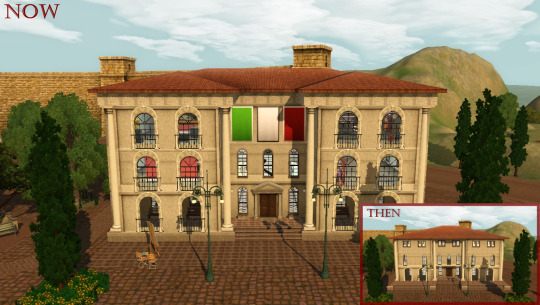
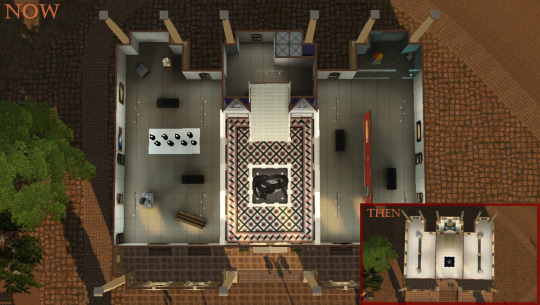
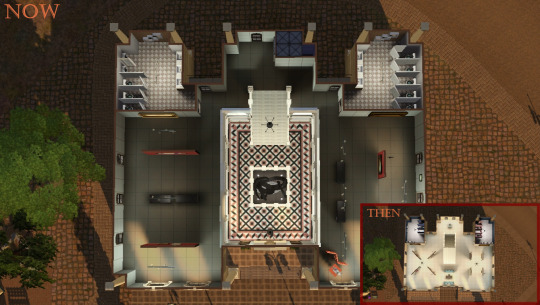
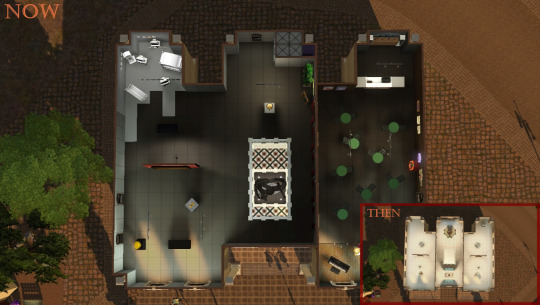
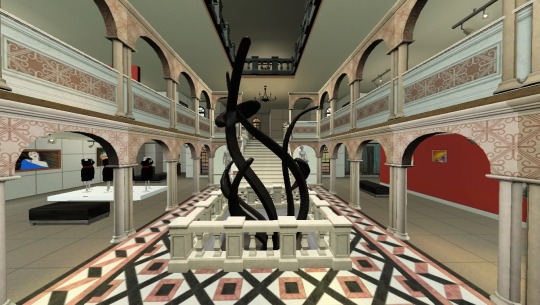
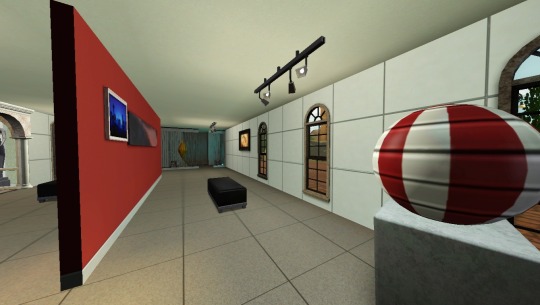
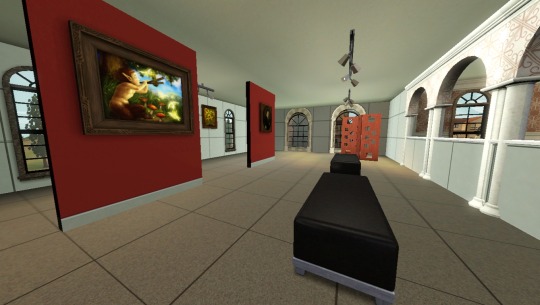
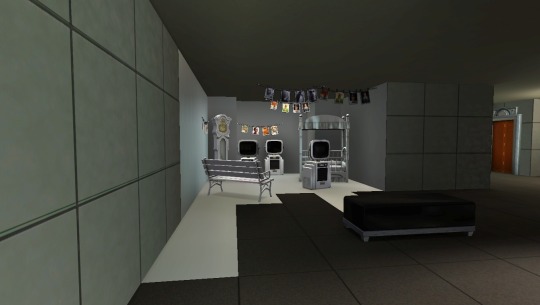
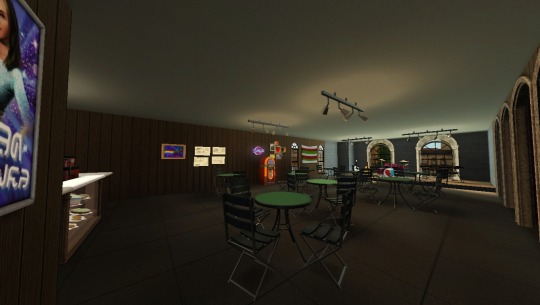
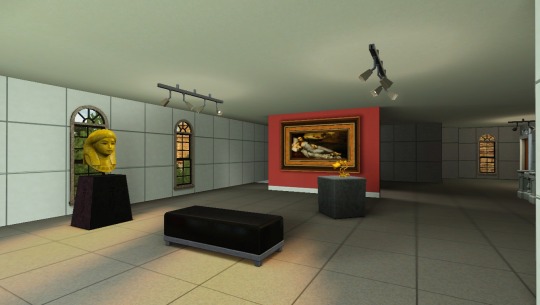
Nuovo Museo D’Arte - 3rd Anniversary Gift and Monte Vista’s Art Gallery (Museum D’Art) Makeover
The @mwthesims3 simblr completed 3 years today (January 19th), wich also remembered myseld that I’m playng The Sims 3 for five years (since January 2012)! I didn’t know what to give to all of you as a gift, so I made this lot makeover of that crappy Art Museum from Monte Vista.
It is also for @buildingchallenge Week 2: Maxis Makeover ¹ ²
Requirements:
Base Game and all EPs (including ITF)
Decades(70s/80s/90s) SP
No CC
Monte Vista
DOWNLOAD HERE! ³
¹ I’m really, really late ² If it is still active ³ It’s free!
49 notes
·
View notes
Text
#BnS77 A Park For Rose
Yep, that’s right your old receptionist/PA/BFF would like for you to build a park, not just any park, a park suitable for toddlers!! It has to be built on Midtown Meadows in Newcrest and must include at least one rose bush, other than that the details are up to you. Oh, yeah, her hubby, Douglas Curtis III is footing the bill for this one, so you get a generous $250,000 to play with. You can find the thread here.
#sims 4#the sims 4#thesims4#the sims build#sims 4 build challenge#TheSims4 buildingchallenge#simsbuildingchallenge#sims toddlers
1 note
·
View note
Photo






So I can’t believe I made this, took me 5 hours on JUST the external part. This is a Victorian farm house and somewhat a Victorian garden...I haven’t even begun the interior at all yet. This is for the buildingchallenge for week three!
I got the shape idea from here:

I’m exhausted, and need to take care of things, like food, get dressed, and brush my teeth. *note I suck at building houses. I always end up building shit like this here. I will upload this soon, just give me a week to find the cc I used. I’m using this as a gift for my followers!
The lot is now available here
keeps crashing, so sorry guys.

306 notes
·
View notes
Photo









Multi-Gen Craftsman - No CC
This 4 bed, 5 bath home on a 40x30 lot comes complete with its own self-contained in-law suite so that grandparents can live with their extended family whilst still maintaining privacy. They even have their own entrance and section of garden.
Created for Week 4 the buildingchallenge
I was a little bit inspired by the style of the Reagan's house on Blue Bloods (love that show) hence all the brick and wood!
To download click HERE to add to your favourites on The Sims 4 Gallery
Or search for KrazyAngelKat81 under OriginID in game.
Note: Items from the Outdoor Retreat Game Pack have been used in this build.
#buildingchallenge#craftsman#the sims 4#the sims 4 building#the sims 4 lot#ts4cc#KAK81#sims 4 house#sims 4 home#multi-generational#the sims 4 lots#ts4 lots#ts4 house#ts4 home#40x30
181 notes
·
View notes
Photo







I wanted to try the building challenge because, well, I wanted to see if I could do it. I rarely build on smaller lots, and money is never something I think of when building so. But I did it! and it wasn't that hard (or well it would have been hard if I didn't have all that cheap cc lol)
Unfurnished: §14,156 Furnished: §19,267 Lot size: 20x20
Challenge completed!
#sims 3#buildingchallenge#exterior#adventures in Elmdale#Fraxinus#yes i named it after a tree#and now i realllllllly need to go to bed
161 notes
·
View notes
Photo







Victorian - Download
For Building Challenge’s week three “Victorian” theme.
Size: 40 x 40 Price: Price: $134,152 Expansions: Base Game Compatible
166 notes
·
View notes
Photo











I can’t believe my ten year old sister spent the last 7 hours building this lot! *cough* I helped with the deco bedroom.
Only part she seemed to forget was a bathroom...I guess her sims pee in the bushes here
158 notes
·
View notes
Photo

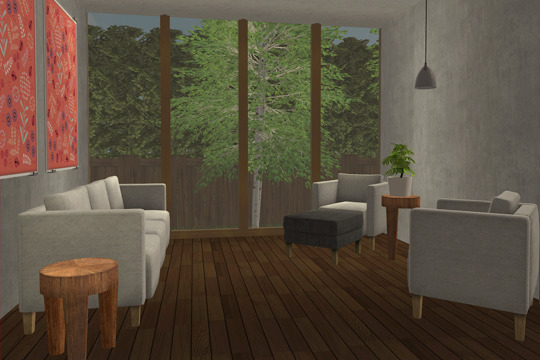







So excited to be on holidays and be able to give buildingchallenge‘s week seven challenge, a shotgun house, a go. And because I do terrible things to myself I thought, why not slap on a two hour time limit?
145 notes
·
View notes
Photo

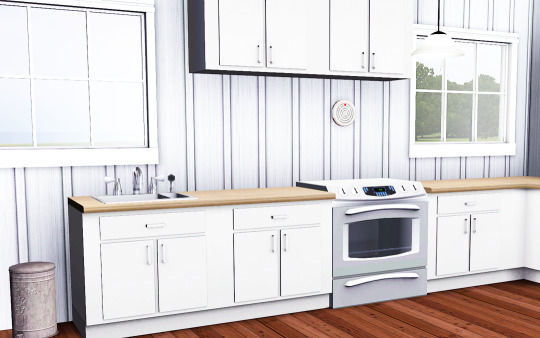

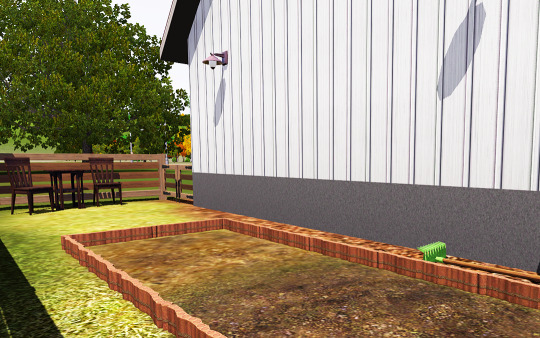
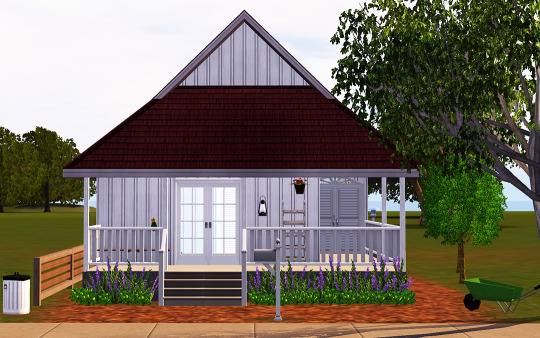
Richardson Farmhouse
My first @buildingchallenge. A partially furnished, one bed, one bath built for the theme “farmhouse”. It’s small, but you can put it on a larger lot if you want to add actual farming aspects besides the small garden in the back.
20x15 lot
$14,576
I have all EPs and SPs.
CC:
Slate Roof
Bungalow Windows
WT Porch Fence
Armiel Build Set DIY Pack1
Trapping Floor Conversions
EA Lavender
Gloves (Wall), Ladder Shelf, Trashcan
Rake, Fork, Wheelbarrow
Cubicle Bench
Light Switches
Simple Kitchen
Simple Shower Tub
Audrey Kitchen Sink
Download
119 notes
·
View notes
